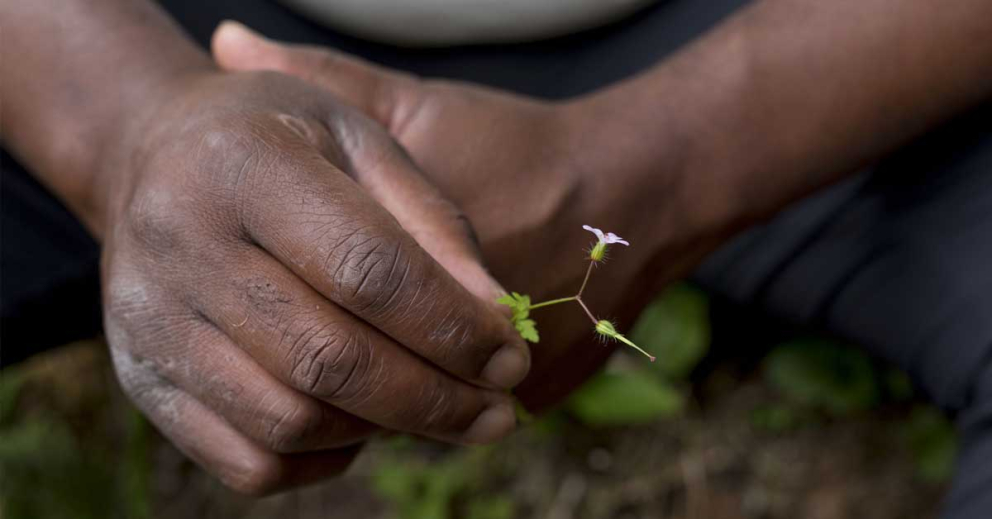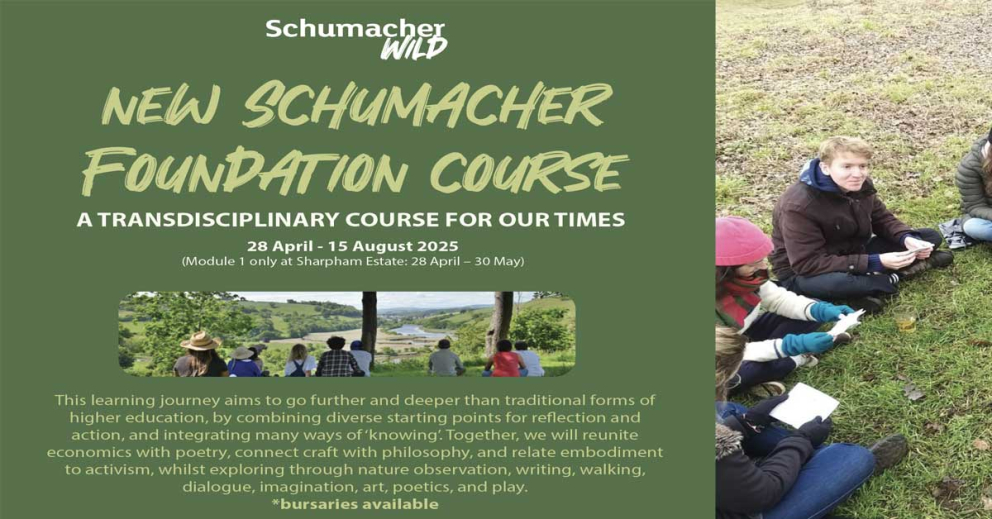Growing Awareness - 800 litres of apple juice!

Welcome to the latest news-post with our Head Gardener Bryony Middleton
Apples and Pears – up the stairs?
This Cockney rhyming slang rings only too true for us at Sharpham where our orchards are situated on the steep banks down to the River Dart. Any harvesting requires strong calf muscles!
The orchards this year produced a glorious harvest. While 2018 saw a late snow and frosts that damaged the early blossom, in 2019 we seem to have escaped the harsh weather and have been rewarded with a juicy bounty.
Many harvesting days with our volunteers were followed by juicing them on the traditional Orchard Link press and 800 litres later, our freezers are full to the brim. This delicious elixir can be enjoyed on our retreats in the year ahead.
Fresh apples are also abundant in the fruit bowl in Sharpham House at this time of year, where we try to focus on the seasonal produce available directly from our land and Garden Apprentice Amy has been writing up about the wonderful varieties we have for retreatants to enjoy.
| The name | The information |
|---|---|
| Cornish Aromatic |
The skin is rough and dry, and looks and feels like an expensive but worn old tapestry. The flesh is firm, not particularly juicy, and the flavour is quite rich with a hint of pineapple. Cornish Aromatic is an elegant old-fashioned apple variety from Cornwall. The fruit have a beautiful russeted skin with red streaks. |
| Court of Wick |
These apples taste sweet and full-flavoured. The flesh is pale yellow, crisp and very juicy. The fruits are a little smaller than average. The skin is light brown with some orange streaks and patches on the side facing the sun. Court of Wick is known to date back to at least 1790. It originated near Yatton in Somerset. |
| Farmer’s Glory |
A dual-purpose apple that can be used for eating or cooking. The flesh has a sharp quality which sweetens as it ripens. Farmer's Glory is a vigorous Devon apple variety and is one of the prized trees in our Old Orchard. This orchard was restored by former head gardener and fruit tree expert, Ben Pike. |
| Grand Sultan |
Ripe in early September, the flesh is crisp, fine textured, sweet and juicy with good acid and a very complex rich flavour. A pretty red skinned apple, introduced from Russia in 1864. It has been found in numbers in North Devon and Gloucestershire. |
| King Byerd |
King Byerd ripens in late October when it mellows to a sweet, sharp taste. The fruit has green skin, which turns yellow when ripened, developing flecks of red and grey russet. A variety of apple received from Cornwall in 1954. This late-season variety is harvested from late October. |
| Mère de Menage |
A variety of large deep red blushed apple with a very sweet, juicy and only mildly acidic taste. It cooks to a purée so is good for sauces and charlottes. This late-season variety has been known since the late 1600s, and is harvested from early October. |
| Northcott Superb |
A Cox-style apple, with white-green flesh that is quite dense and sweet, and very "appley". The texture is firm rather than crisp, and there is not a lot of juice. A Devonshire variety, now rare in many orchards. Thought to date back to the Victorian period. |
| Pitmaston Pineapple |
An exceptional apple with a powerful nutty flavour, honey sweet yet also sharp. It might taste a bit like a pineapple if you close your eyes and believe, but the name refers to it's warm yellow colour and shape... The apples are very small, about 5cms across. The first Pitmaston Pineapple apple tree was bred in the 1780's. The fruits are ready to eat in mid-October |
| Roundway Magnum Bonum |
These are large-sized apples with red-striped skin. Inside, they have firm, dry flesh with a sweet, pear-like flavour. Roundway Magnums can be used for fresh-eating or cooking, and are particularly good in apple crumble. This variety is known to have originated in Wiltshire in 1864. |
| Veitch’s Perfection |
This variety combines the nutty flavours of a Russet with the sharpness of a Granny Smith. Mid - late season fruiting. A Devon variety, bred by Veitch & Sons in their Exeter nursery in the 19th century. |
Find out more about Sharpham's gardens here
Find out how to volunteer in Sharpham's gardens and on the wider Estate here










